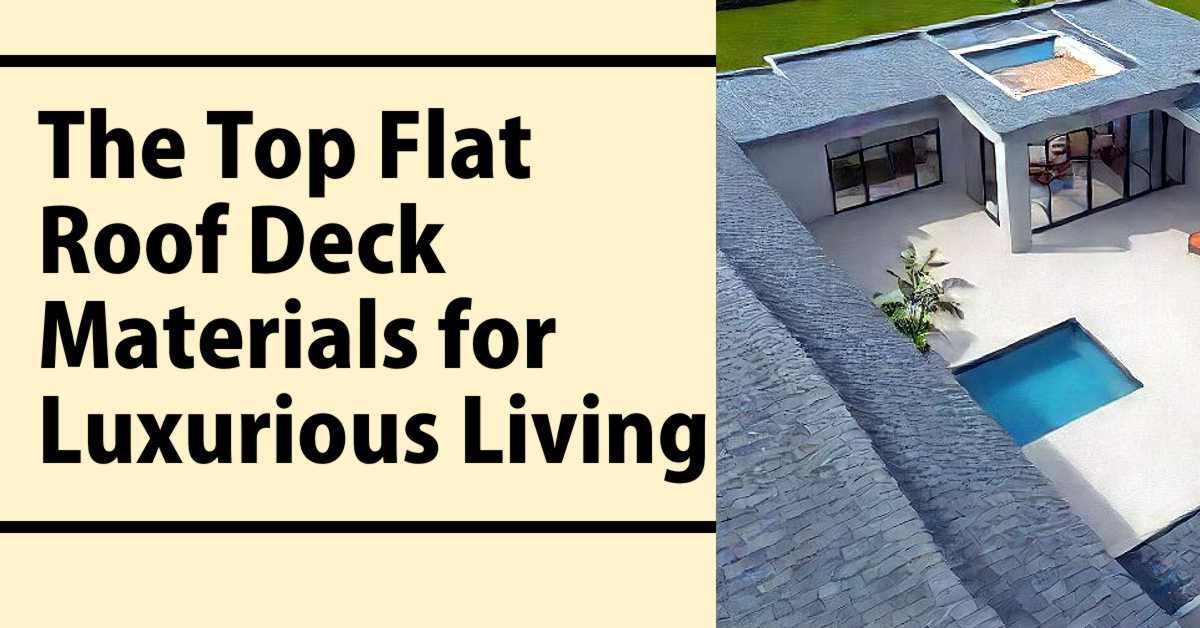In today’s world, where urban living spaces are becoming increasingly compact, flat roof decks offer a unique opportunity to extend your living area and create a serene outdoor oasis. These versatile spaces can be transformed into captivating entertainment zones, lush rooftop gardens, or simply a calm retreat from the hustle and bustle of city life. As a licensed civil engineer and Flat Roof Deck specialist with over 25+ years of experience, I have witnessed the growing demand for flat roof decks and the countless materials available to bring these visions to life.
The Importance of Choosing the Right Materials
Selecting the appropriate materials for your flat roof deck is crucial, as it not only determines the aesthetic appeal but also ensures durability, safety, and ease of maintenance. With a plethora of options available, it can be overwhelming to navigate through the choices. In this comprehensive guide, we will explore the various flat roof deck materials, their unique characteristics, and their suitability for different climates and usage scenarios.
Flat Roof Deck Material List
Wood Decking
Wood has long been a traditional choice for decking due to its natural beauty and warmth. It lends a classic and inviting ambiance to any outdoor space.

Cedar
Cedar is a popular option among homeowners due to its inherent resistance to moisture, decay, and insect infestations. Its rich, reddish-brown hue adds a touch of elegance to any rooftop deck.
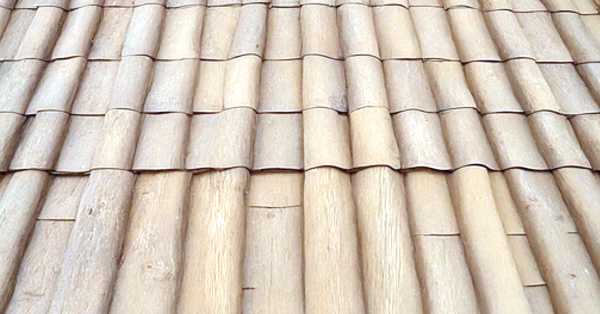
Pressure-Treated
Pine For a more budget-friendly alternative, pressure-treated pine is a viable option. While it may require more maintenance than cedar, it offers a solid foundation for your outdoor living space.
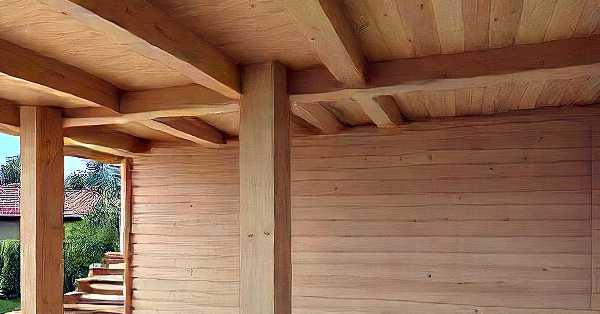
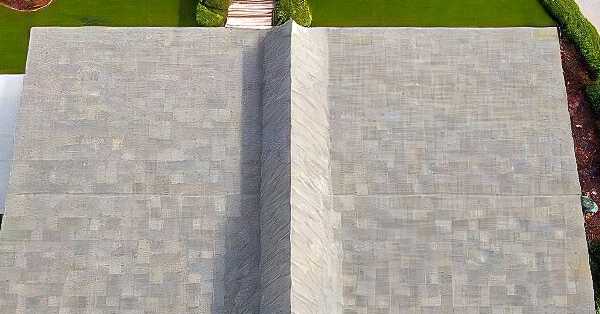
Exotic Hardwoods
For those seeking a truly luxurious and long-lasting option, exotic hardwoods such as ipe, cumaru, and tigerwood are excellent choices. These dense and durable woods can withstand even the harshest weather conditions.


Composite Decking
Composite decking, made from a blend of wood fibers and plastic, offers a low-maintenance solution for flat roof decks.

Capped Composites
Capped composites feature a protective polymer coating that enhances their resistance to fading, staining, and moisture damage, making them an ideal choice for rooftop decks exposed to harsh weather conditions.

Uncapped Composites
Uncapped composites, while more affordable, may require more maintenance compared to their capped counterparts. However, they still offer a durable and environmentally friendly alternative to traditional wood decking.
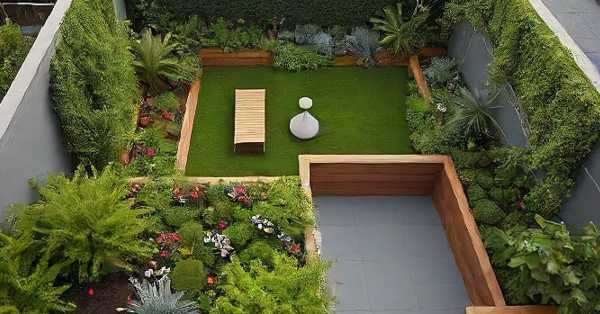
Aluminum Decking
As a seasoned civil engineer and construction specialist, I have witnessed the growing popularity of aluminum decking among homeowners and commercial property owners alike. This innovative material has captivated the industry with its sleek, modern aesthetic and unparalleled durability, making it a top choice for creating exceptional outdoor living spaces.

Durability and Weather Resistance Of Aluminum Decking
One of the most significant advantages of aluminum decking is its ability to withstand even the harshest weather conditions. I have implemented aluminum decking solutions in various climates, from coastal regions with high humidity and salt exposure to arid desert environments with intense sunlight and temperature extremes. This versatility is a testament to the material’s resilience and longevity.
Corrosion Resistance and Low Maintenance
Unlike traditional wood or composite decking, aluminum decking is virtually impervious to moisture, rot, and insect infestations. I have seen firsthand how aluminum decking maintains its structural integrity and aesthetic appeal even after years of exposure to the elements. This durability translates into minimal maintenance requirements, saving homeowners and property managers time and money in the long run.
Comparison Table: Maintenance Requirements
| Decking Material | Staining/Sealing | Cleaning | Replacement Frequency |
|---|---|---|---|
| Wood | Every 1-2 years | Frequent | 10-30 years |
| Composite | None | Moderate | 25-50 years |
| Aluminum | None | Minimal | 50+ years |
As you can see from the table, I have found that aluminum decking stands out as a truly low-maintenance option, requiring minimal cleaning and no staining or sealing, ensuring a hassle-free outdoor living experience for my clients.
Aesthetic Versatility and Design Flexibility
Powder-Coated Aluminum: A Vibrant and Durable Finish
For those seeking a touch of color and personality in their outdoor living spaces, I highly recommend exploring the world of powder-coated aluminum decking. This innovative finish not only provides a long-lasting, rust-resistant barrier but also offers a vast array of color options to choose from.
From bold and vibrant hues to subtle and sophisticated tones, I have worked with clients to create truly unique and visually stunning outdoor retreats. The powder-coated finish is incredibly durable, ensuring that the color remains vivid and consistent even after years of exposure to the elements.
Color and Finish Options for Powder-Coated Aluminum Decking
| Color Family | Finish | Heat Resistance | UV Resistance |
|---|---|---|---|
| Earthy Tones | Matte, Textured | Excellent | Excellent |
| Vibrant Hues | Glossy, Smooth | Excellent | Very Good |
| Metallic Tones | Satin, Brushed | Excellent | Excellent |
I take pride in guiding my clients through the vast selection of color and finish options, ensuring that their vision for a personalized outdoor living space is brought to life with precision and attention to detail.
Anodized Aluminum: A Natural and Sophisticated Choice
For those who appreciate a more natural and understated aesthetic, I highly recommend exploring the world of anodized aluminum decking. This unique process creates a protective oxide layer on the surface of the aluminum, resulting in a matte, non-reflective finish that perfectly complements contemporary architectural styles.
I have implemented anodized aluminum decking solutions in a variety of settings, from urban rooftop retreats to luxurious resort properties. The natural, sophisticated look of anodized aluminum seamlessly blends with its surroundings, creating a harmonious and inviting outdoor living environment.
Anodized Aluminum Decking: A Sustainable and Eco-Friendly Choice
| Environmental Impact | Aluminum Decking | Wood Decking | Composite Decking |
|---|---|---|---|
| Recyclability | Excellent | Good | Fair |
| Carbon Footprint | Low | Moderate | Moderate |
| Sustainable Sourcing | Very Good | Fair | Good |
As an advocate for sustainable construction practices, I am particularly drawn to the eco-friendly nature of anodized aluminum decking. Not only is aluminum highly recyclable, but its production also has a relatively low carbon footprint compared to other decking materials. Additionally, the anodizing process itself is environmentally friendly, making anodized aluminum decking a responsible choice for those who value sustainability.
Engineering Excellence and Structural Integrity
As a civil engineer, I understand the importance of structural integrity and safety when it comes to outdoor living spaces. Aluminum decking excels in this regard, offering superior strength-to-weight ratio and exceptional load-bearing capabilities.
Engineered for Durability and Safety
I have designed and overseen the installation of aluminum decking systems that meet or exceed the highest safety standards in the industry. From robust framing systems to slip-resistant surface textures, every aspect of aluminum decking is engineered with durability and safety in mind.
Strength and Load-Bearing Capacity Comparison
| Decking Material | Weight (lb/sq ft) | Load Capacity (lb/sq ft) |
|---|---|---|
| Wood | 2.5 – 4.0 | 50 – 100 |
| Composite | 3.0 – 5.0 | 100 – 200 |
| Aluminum | 1.5 – 2.5 | 200 – 400 |
As the table illustrates, I have found that aluminum decking not only offers a lightweight solution but also boasts an impressive load-bearing capacity, making it suitable for various applications, from residential patios to commercial rooftop terraces.
Seamless Integration with Existing Structures
One of the challenges I often encounter in outdoor living space projects is seamlessly integrating the decking with the existing structure. Aluminum decking excels in this regard, offering versatile installation methods and compatibility with various framing systems.
Whether working on a new construction project or retrofitting an existing building, I have successfully implemented aluminum decking solutions that seamlessly blend with the architectural design, ensuring a cohesive and visually appealing final result.
Concrete and Pavers
As a civil engineer with a keen eye for design, I have witnessed the growing popularity of industrial and minimalist aesthetics in outdoor living spaces. Concrete and pavers have emerged as versatile materials that not only cater to this aesthetic but also offer exceptional durability and functionality for flat roof decks. In my years of experience, I have had the privilege of working with these materials to create stunning outdoor retreats that seamlessly blend form and function.
Stamped Concrete: A World of Possibilities
Stamped concrete has truly revolutionized the way we approach flat roof deck design. With its ability to mimic the appearance of various materials such as stone, brick, or wood, this innovative solution offers a level of customization that is unparalleled in the industry.
I have worked with clients to create truly unique and visually captivating stamped concrete designs, tailored to their individual preferences and architectural styles. From rustic and warm textures that evoke a cozy ambiance to sleek and contemporary patterns that exude modern sophistication, the possibilities are endless.
Customizable Designs and Patterns
One of the most exciting aspects of working with stamped concrete is the ability to create custom designs and patterns. I have collaborated with skilled artisans to develop intricate and one-of-a-kind patterns that not only enhance the aesthetic appeal of the outdoor living space but also serve as a reflection of the client’s style and taste.

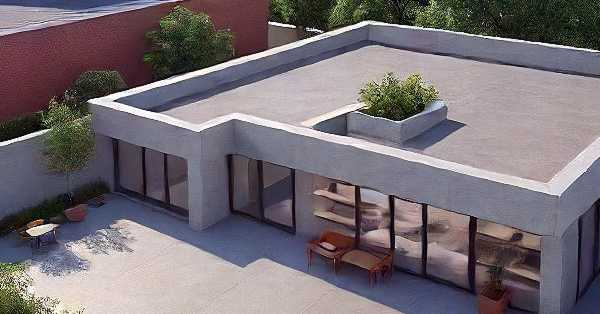
Stamped Concrete Design Options
| Pattern | Texture | Color Variations | Slip Resistance |
|---|---|---|---|
| Wood Grain | Rough, Textured | Limited | Excellent |
| Brick | Smooth, Defined | Moderate | Good |
| Stone | Textured, Irregular | Extensive | Excellent |
| Custom Designs | Variable | Unlimited | Variable |
As you can see from the table, the design possibilities with stamped concrete are truly limitless, allowing me to create unique and tailored solutions that meet the specific needs and preferences of each client.
Concrete Pavers: Modular Elegance
For those seeking a more modular and easy-to-install solution, concrete pavers have proven to be an excellent choice for flat roof decks. I have implemented paver systems in a wide range of outdoor living spaces, from cozy residential patios to expansive commercial rooftop terraces.

Versatility in Colors, Textures, and Patterns
One of the standout features of concrete pavers is the vast array of colors, textures, and patterns available. I have worked with a diverse palette of hues, from earthy tones that blend seamlessly with natural surroundings to bold and vibrant shades that add a pop of color to the outdoor living space.
The textural variations, ranging from smooth and polished surfaces to rougher, more organic finishes, allow me to create visually interesting and tactile outdoor environments that engage the senses.
Concrete Paver Options
| Color Palette | Texture | Pattern Availability | Installation Flexibility |
|---|---|---|---|
| Warm Tones | Smooth, Polished | Moderate | High |
| Cool Tones | Rough, Textured | Extensive | Moderate |
| Vibrant Hues | Mixed Textures | Limited | High |
As evident from the table, concrete pavers offer a remarkable level of versatility, allowing me to tailor the design to suit the specific aesthetic and functional requirements of each project.
Durability and Low Maintenance
One of the key advantages of both stamped concrete and concrete pavers is their exceptional durability and low maintenance requirements. As a civil engineer, I understand the importance of selecting materials that can withstand the elements and the test of time.
Both concrete and pavers are highly resistant to moisture, UV exposure, and extreme temperatures, ensuring that the outdoor living space retains its visual appeal and structural integrity for years to come. Additionally, these materials require minimal upkeep, making them a hassle-free choice for homeowners and property managers alike.
Durability and Maintenance Comparison
| Material | Weather Resistance | Stain Resistance | Maintenance Requirements |
|---|---|---|---|
| Stamped Concrete | Excellent | Good | Periodic Sealing |
| Concrete Pavers | Excellent | Excellent | Minimal Cleaning |
As the table illustrates, both stamped concrete and concrete pavers offer outstanding durability and weather resistance, with concrete pavers providing superior stain resistance and even lower maintenance requirements.
Seamless Integration and Design Versatility
As a civil engineer, I understand the importance of seamlessly integrating the flat roof deck design with the existing architecture and surrounding environment. Concrete and pavers excel in this regard, offering a level of design versatility that allows me to create cohesive and harmonious outdoor living spaces.
Whether working with modern, contemporary structures or more traditional architectural styles, I have successfully implemented concrete and paver solutions that complement the overall aesthetic, blending seamlessly with the building’s design elements and surrounding landscapes.
Factors to Consider
Climate and Weather Conditions
When selecting the appropriate material for your flat roof deck, it is essential to consider the climate and weather conditions of your region.
Durability and Weather Resistance
In areas with harsh weather conditions, such as extreme heat, cold, or frequent precipitation, materials like aluminum, composite, or concrete may be more suitable as they offer superior durability and weather resistance.
Slip Resistance
For regions with high humidity or frequent rainfall, materials with enhanced slip resistance, such as textured or grooved surfaces, can ensure a safer outdoor living space.
Intended Use and Functionality
The intended use of your flat roof deck will also play a significant role in determining the most suitable material.
Outdoor Living and Entertainment
If you plan to use your flat roof deck for outdoor living and entertainment purposes, materials like wood or composite decking can create a warm and inviting atmosphere.
Rooftop Gardens and Green Spaces
For those interested in creating rooftop gardens or green spaces, materials like concrete pavers or aluminum decking may be more appropriate, as they can support the weight of soil and plantings while allowing for proper drainage.
Aesthetics and Design Considerations
The overall aesthetics and design of your flat roof deck should complement the architectural style of your building.
Color and Texture Materials like wood, composite, and concrete offer a wide range of colors and textures, allowing you to create a cohesive and visually appealing outdoor space.
Architectural Style
For modern or contemporary buildings, materials like aluminum or concrete may be more suitable, while traditional or rustic structures may benefit from the warmth and charm of wood or composite decking.
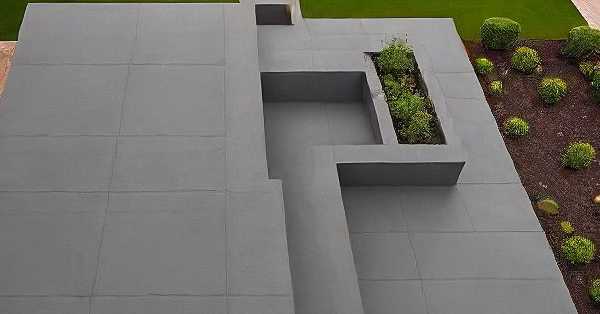
Maintenance and Longevity: A Personal Perspective
As an engineer with years of experience in the construction industry, I understand the importance of choosing the right materials for flat roof decks. Maintenance requirements and longevity are two crucial factors that can significantly impact the long-term cost and satisfaction of your investment.
Maintenance Requirements
Different materials have varying maintenance requirements, which should be considered when choosing the right option for your flat roof deck. I’ve witnessed firsthand how proper maintenance can extend the lifespan of a project, and neglect can lead to premature degradation.
Wood Decking
Wood decking, while beautiful, requires regular maintenance such as staining, sealing, and cleaning to protect it from weather damage and extend its lifespan. I’ve worked on projects where homeowners skipped this crucial step, leading to warping, splitting, and discoloration of the wood.
Composite Decking
Composite decking, made from a combination of wood fibers and plastic, is generally low-maintenance, requiring only occasional cleaning and minimal upkeep. I’ve seen composite decks look as good as new after a simple power wash, making them a popular choice for busy homeowners.
Aluminum Decking
Aluminum decking is virtually maintenance-free, making it an excellent choice for those seeking a hassle-free outdoor living space. I’ve installed aluminum decks that have withstood harsh weather conditions and harsh environments with minimal signs of wear and tear.
Longevity and Durability
The lifespan of your flat roof deck materials is a crucial consideration, as it impacts the long-term cost and sustainability of your investment. I’ve witnessed firsthand how investing in durable materials can pay dividends in the long run.
Wood Decking
Depending on the type of wood and maintenance level, wood decking can last anywhere from 10 to 30 years. I’ve worked on cedar decks that have lasted over two decades with proper care, while pressure-treated pine decks may only last 10-15 years without diligent maintenance.
| Wood Type | Average Lifespan (Years) |
|---|---|
| Cedar | 20-30 |
| Redwood | 15-25 |
| Pressure-Treated Pine | 10-15 |
Composite Decking
Composite decking typically lasts between 25 and 30 years, with some high-quality options lasting up to 50 years. I’ve replaced composite decks that were installed over 20 years ago, and they still looked great, thanks to their durable construction and UV-resistant caps.
Aluminum Decking
Aluminum decking is one of the most durable options, with a lifespan of up to 50 years or more, making it a wise long-term investment. I’ve seen aluminum decks that have withstood harsh coastal environments for decades without showing signs of corrosion or significant wear.
| Material | Average Lifespan (Years) |
|---|---|
| Aluminum | 50+ |
| High-Quality Composite | 30-50 |
| Wood | 10-30 |
When it comes to flat roof decks, I always emphasize the importance of considering both maintenance requirements and longevity. By choosing the right materials and following proper maintenance protocols, you can ensure your investment lasts for years to come, providing a beautiful and functional outdoor living space.
Aluminum Decking
Aluminum decking is one of the most durable options, with a lifespan of up to 50 years or more, making it a wise long-term investment.
Cost Considerations
Initial Investment
When selecting materials for your flat roof deck, it is essential to consider the initial investment required for each option.
Budget-Friendly Options
Pressure-treated pine and uncapped composite decking are generally more budget-friendly options, making them suitable for those with limited financial resources.
Mid-Range Options
Cedar, capped composite decking, and concrete pavers fall within the mid-range price point, offering a balance between cost and quality.
Luxury Options
Exotic hardwoods, aluminum decking, and stamped concrete are considered luxury options and can be significantly more expensive than other materials.
Long-Term Costs
In addition to the initial investment, it is crucial to consider the long-term costs associated with each material, including maintenance, repairs, and potential replacement.
Maintenance Costs
Materials like wood decking and uncapped composites may require more frequent maintenance, resulting in higher long-term costs.
Replacement Costs
While some materials like aluminum decking may have a higher initial investment, their exceptional durability and longevity can offset the need for frequent replacements, making them a more cost-effective option in the long run.
Findings
Choosing the right material for your flat roof deck is a delicate balance between aesthetic appeal, functionality, durability, and cost. With the wide array of options available, from classic wood decking to modern aluminum or composite solutions, there is a material that can cater to every taste and requirement.
Embrace the opportunity to transform your flat roof into a personal oasis, whether it be a lush rooftop garden, a vibrant entertainment area, or a serene retreat. With the right materials and expert guidance, the possibilities are endless.
Final Words
In the ever-evolving world of urban living, flat roof decks offer a unique opportunity to expand our living spaces and reconnect with the great outdoors. As a licensed civil engineer and construction specialist with over 25 years of experience, I have witnessed firsthand the transformative power of well-designed flat roof decks.
Whether you envision a serene rooftop oasis, a lively entertainment hub, or a flourishing green space, selecting the right materials is the foundation upon which your dream will take shape. By carefully considering factors such as climate, intended use, aesthetics, and long-term costs, you can create a truly exceptional outdoor living experience that not only enhances your lifestyle but also adds value to your property.
Embrace the opportunity to transform your flat roof into a personalized sanctuary, where you can escape the hustle and bustle of daily life and immerse yourself in the beauty of nature. With the right materials and expert guidance, the possibilities are endless, and the rewards are immeasurable.
Key Takeaways
- Flat roof decks provide a versatile opportunity to expand your living space and create an outdoor oasis.
- Material selection is crucial, considering factors like climate, intended use, aesthetics, and long-term costs.
- Wood, composite, aluminum, concrete, and pavers offer various options to suit different preferences and requirements.
- Prioritize durability, weather resistance, and low maintenance for a long-lasting and enjoyable outdoor living experience.
- Professional expertise and guidance can ensure a successful flat roof deck project that meets your unique needs and exceeds your expectations.
Common Queries Replied
Can a flat roof support a deck?
Yes, flat roofs can support decks, provided that they are designed and constructed to handle the additional weight and load requirements. Proper structural reinforcement and waterproofing measures must be taken to ensure the safety and longevity of the deck.
What is the best material for a flat roof deck in a hot and sunny climate?
In hot and sunny climates, materials like aluminum, concrete pavers, or composite decking with a protective cap layer are excellent choices. These materials are resistant to fading, warping, and heat absorption, ensuring a comfortable and long-lasting outdoor living space.
How do I ensure proper drainage on a flat roof deck?
Proper drainage is essential for flat roof decks to prevent water accumulation and potential damage. This can be achieved through the use of slightly sloped surfaces, drainage channels, or incorporating permeable materials that allow water to pass through, such as certain types of pavers or decking systems with drainage gaps.
Can I install a rooftop garden on my flat roof deck?
Yes, rooftop gardens are a popular and sustainable option for flat roof decks. However, it is crucial to choose materials that can support the additional weight of soil, plants, and any necessary irrigation systems. Concrete pavers, aluminum decking, or specialized green roof systems are suitable choices for rooftop gardens.
How long do different flat roof deck materials typically last?
The lifespan of flat roof deck materials can vary significantly. Wood decking may last 10 to 30 years, composite decking can last 25 to 50 years, and aluminum decking can last up to 50 years or more with proper maintenance.
Can I install a flat roof deck myself, or do I need professional help?
While some homeowners may attempt to install a flat roof deck themselves, it is highly recommended to seek professional help from licensed contractors or engineers. Flat roof deck construction requires specialized knowledge and expertise to ensure proper structural integrity, waterproofing, and safety.
How do I maintain and clean different flat roof deck materials?
Maintenance requirements vary depending on the material. Wood decking may require regular staining, sealing, and cleaning, while composite and aluminum decking are generally low-maintenance, requiring only occasional cleaning. Consult with professionals or refer to manufacturer guidelines for specific maintenance recommendations.
Can I install a flat roof deck on an existing flat roof, or do I need to start from scratch?
In some cases, it is possible to install a flat roof deck on an existing flat roof, provided that the existing structure can support the additional weight and load. However, a professional assessment and potential reinforcement may be necessary to ensure the safety and longevity of the new deck.
How do I choose the right color and texture for my flat roof deck materials?
When choosing the color and texture of your flat roof deck materials, consider factors such as the overall aesthetic of your building, the desired ambiance of the outdoor space, and the level of maintenance you are willing to undertake. Lighter colors may show dirt and wear more easily, while textured surfaces can provide better traction and slip resistance.
Can I install a flat roof deck on a sloped roof?
While flat roof decks are primarily designed for flat or low-sloped roofs, it is possible to install them on slightly sloped roofs as well. However, this may require additional structural reinforcement and waterproofing measures to ensure proper drainage and prevent water accumulation.
How do I choose the right flat roof deck material for my budget?
When considering your budget, assess the initial investment required for different materials, as well as the long-term costs associated with maintenance, repairs, and potential replacement. Materials like pressure-treated pine and uncapped composites may be more budget-friendly initially, while aluminum decking or exotic hardwoods can be more expensive but may offer better value in the long run due to their durability and low maintenance requirements.
Can I mix and match different flat roof deck materials?
Yes, it is possible to mix and match different flat roof deck materials to create a unique and visually appealing design. For example, you could combine wood decking with concrete pavers or use aluminum decking as an accent feature around a composite deck. However, it is important to ensure compatibility between materials and proper installation techniques to prevent any potential issues.
How do I ensure the safety and accessibility of my flat roof deck?
Safety should be a top priority when designing and constructing a flat roof deck. Incorporate features such as railings, non-slip surfaces, and proper lighting to ensure a safe and enjoyable outdoor living space. Additionally, consider accessibility requirements for individuals with disabilities, such as ramps or level access points.
Can flat roof deck materials be recycled or reused?
Many flat roof deck materials, such as wood, aluminum, and concrete, can be recycled or reused at the end of their lifespan. This not only reduces waste but also contributes to a more sustainable and environmentally friendly construction process. Consult with local recycling facilities or material suppliers for more information on recycling and reuse options.
By addressing these frequently asked questions, I hope to have provided you with valuable insights and information to help you make an informed decision when selecting materials for your flat roof deck project. Remember, the key to a successful and enjoyable outdoor living space lies in careful planning, attention to detail, and the guidance of experienced professionals.
With over 25 years of experience as a licensed civil engineer and construction specialist, I have overseen countless flat roof deck projects, from residential rooftop retreats to commercial outdoor spaces. My extensive knowledge of roofing materials, specifications, and construction techniques has earned me a reputation as a trusted authority in the industry.
I am driven by a passion for creating functional and aesthetically pleasing outdoor living spaces. This passion has motivated me to stay up-to-date with the latest trends, materials, and best practices in the field. My attention to detail and commitment to quality have resulted in numerous successful projects that have not only enhanced the lives of my clients but also set new standards in the construction of flat roof decks.
